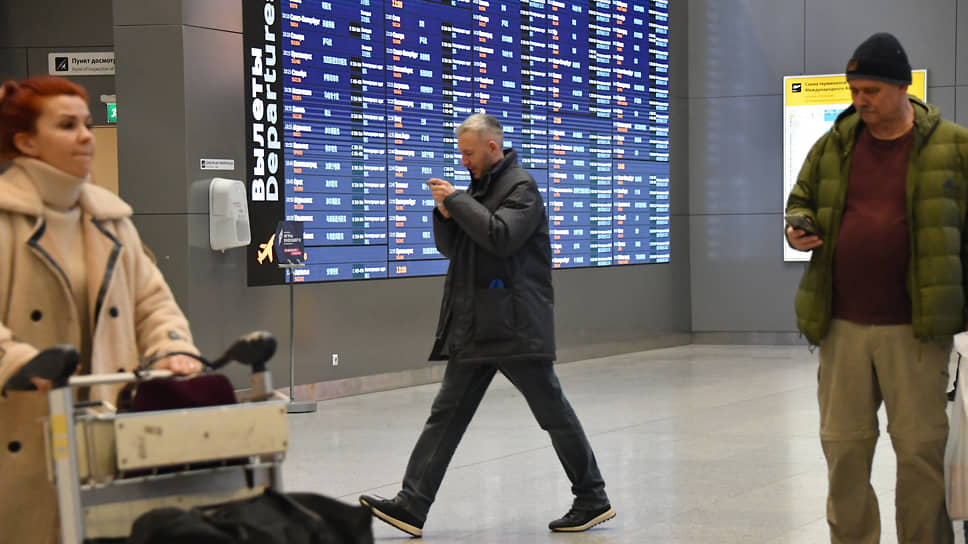The global tourism market has fully recovered after the COVID-19 pandemic
[ad_1]
With strong growth in 2022-23, the global tourism market has recovered from the impact of the COVID-19 pandemic. At the end of last year, many airlines that had recently been on the verge of bankruptcy recorded a double increase in profits, and hotel operators reported record occupancy volumes. Now market participants and experts are arguing about how long the post-pandemic growth of the industry will be and when a correction can be expected.
Revanchist tourists
At the beginning of March, an international conference ITB, dedicated to the situation in the global tourism market. More than 400 company representatives and experts spoke at the event, which was attended by a total of 24 thousand people and covered by more than 3 thousand journalists from 73 countries. The speakers agreed that the global tourism market has not only recovered from the COVID-19 pandemic, but has also surpassed pre-pandemic 2019.
According to the research company Phocuswright, the global market turnover is already close to $2 trillion. “Now we can say that the pandemic has been overcome,” noted senior vice president of the company Charuta Phadnis
Phocuswright reported that the recovery of the tourism market is proceeding differently in different regions of the world. If in 2019 three regions (North America, Europe/Middle East and Asia) accounted for approximately equal numbers of bookings – each about a third of the global level, now the balance of power has changed: the majority of bookings are in North America, with Europe in second place , only in third place is Asia. As for the most popular destinations for tourism, Europe confidently took first place, which was visited by 700.4 million tourists last year. It accounted for more than half of all international tourist arrivals in 2023 – 54.5%.
Chief Financial Officer of the Marriott International hotel chain Kathleen Oberg explains rapid market recovery due to high pent-up demand. According to her, tourists are “taking revenge” for the time spent without traveling due to coronavirus restrictions. Corporate reports also speak about the recovery of the global tourism market. At the end of February, the Spanish airport operator Aena, which is the world leader in the number of passengers served, reported about receiving net profit at the end of 2023 in the amount of €1.63 billion. This is a record figure in the history of the company. Compared to 2022, Aena’s net profit rose 80.9%, driven by renewed growth in global tourism. Moreover, 2023 profits were 13% higher than 2019, the last year before the COVID-19 pandemic began. Aena’s revenue at the end of 2023 reached €5.14 billion, which is 21.3% more than in 2022. Also at the end of February, the International Airlines Group holding, which includes the British airline British Airlines, the Irish Aer Lingus and the Spanish Iberia, reportedthat operating profit for 2023 reached €3.5 billion. This is twice as much as in 2022 and 10% more than in pre-pandemic 2019 (€3.2 billion). At the beginning of March, the German airline Lufthansa reportedthat in 2023 its annual net profit doubled, amounting to €1.8 billion. In May, Lufthansa will pay dividends for last year – this is the first dividend since the start of the COVID-19 pandemic.
Growth or inhibition?
Now experts and market participants are arguing whether the same rapid growth will continue this year or whether there will be a correction in the market. “We expect that in 2024 demand in the tourism market will be relatively stable, but the growth rate will slow down,”— reported Peter Kern, head of online travel service Expedia, spoke on a conference call with investors. According to the Marriott chain, the average revenue per room this year will grow by 3-5%, while in 2023 an increase of 15% was recorded. Similar forecast give and in the Hilton hotel chain – if in 2023 the company’s average revenue per room increased by 12.6%, then this year the growth will be 2-4%.
In turn, experts from the United Nations World Tourism Organization (UNWTO) believethat growth rates may continue in 2024.
According to the UNWTO Tourism Confidence Index survey, 67% of market participants believe that the situation in 2024 will be even better than in 2023. 28% expect last year’s dynamics to continue, and only 6% believe that the dynamics will slow down compared to last year.
Those surveyed believe that Asian countries have good potential for restoring tourism activity this year. Activity in the Chinese tourism market – both inbound and outbound tourism – should increase, including thanks to the introduced visa-free regime for tourists from France, Germany, Italy, the Netherlands, Spain and Malaysia and new routes of Chinese airlines.
Last week, research company Dragon Trail International released study that this year the Chinese tourism market will almost completely recover from the consequences of the pandemic. The volume of outbound tourism from China at the end of 2024 will reach 80% of 2019, and next year this figure will reach or exceed the 2019 level. According to Oxford Economics, outbound tourism from China will double in 2024 compared to 2023.
The driver of outbound tourism from China is the Arab countries – the UAE, Egypt, Morocco, Saudi Arabia and Qatar, which have made visa-free entry for tourists from China, or provide visas upon arrival in the country. According to online travel agency Qunar, this year the number of orders for tourist trips from China to the UAE, Egypt and Morocco is three times higher than last year.
European tourism will receive a new impetus for growth after Romania and Bulgaria join the Schengen zone on April 1, as well as thanks to the Summer Olympics, which will be held in Paris in July-August.
Trends of the near future
According to the research company Amadeus, tourism market participants will soon use the accumulated funds for the technological development of their business. in the report Travel Technology Investment Trends experts report that 91% of 1,253 companies surveyed in the tourism industry are planning new investments in the near future. Airports most often announced the development of their operations – 17% of respondents. Next come hotel operators with 14%, followed closely by airlines and travel agencies with 13%.
Speaking about priority areas of investment, 60% of airport operators surveyed stated their intentions to develop automation of passenger check-in processes, baggage reception and processing, and the introduction of biometric technologies in data processing. 85% of hotel operators surveyed said they see the greatest potential in developing personalized customer experiences. 40% of travel agencies surveyed consider NDC (New Distribution Capability) technology – a system for exchanging information between travel agencies and air carriers – the most promising area for investment.
As for consumer trends in the tourism market, many forecasts are also given here. Experts Conde Nast Traveler UK believe that popularity will increase in the near future astrotourism. More and more specialized hotels and resorts are opening in different countries, designed specifically for observing the night sky. This requires not only telescopes and open areas, but also places with minimal light pollution from cities, nearby objects, etc. For example, a special astrohotel recently opened in Kent (UK) Lookout Bubble with transparent hemispherical ceilings. The Zulal Wellness Resort began operating in Qatar, where guests, among other services, are offered night sky observation services. Botswana may become a new popular country for astrotourism, in addition to already popular countries in this area such as Norway, Peru or Chile. Tour operators are already organizing astro tours to Makgadikgadi National Park.
Experts consider another promising trend to be temporary house exchange (home swapping). This type of accommodation is increasingly being chosen by tourists who are already tired of regular hotels, or those who want to save on accommodation, as well as those who plan to stay in the country for several weeks. Experts consider this a logical development of couchsurfing, but note a more civilized and technological approach to this type of tourism. For example, Twin City, which operates in two US and European cities—Los Angeles and Lisbon—for an annual subscription of $189, offers its clients accommodations in these cities that can serve as a hub for travel in the US and Europe, respectively. . Unlike couchsurfing, where there is a high risk of fraud or low-quality housing, home swapping service operators, such as Kindred, another specialized platform, monitor the quality of the rental housing provided.
Global warming, which is becoming increasingly noticeable not only to scientists, but also to the wider publicbecame the reason for another trend in the tourism market – the so-called refreshment tourism (coolcation).
This is reflected in the growing demand for summer travel to countries with cold climates. According to luxury travel service Virtuoso, 82% of its clients plan to vacation this summer in Iceland, Finland, Scotland and Latvia. “We are seeing more and more applications for trips to the Scandinavian and Baltic countries – they offer not only traditional ecotourism, but also beaches and reservoirs familiar to tourists,” Conde Nast Traveler UK quotes a representative of the British travel agency Regent Holidays.
Experts also point out that recently more and more famous restaurateurs are opening their own hotels, attracting gourmet tourists. As part of the trend under the code name “restaurateur-hoteliers” Renowned American chef Sam Fox opened the Global Ambassador gastrotel with five restaurants in Phoenix in December. In October, special hotels were built in addition to two famous restaurants at Villa Mummertsberg and the Guesthouse Traube in St. Gallen, Switzerland. In Slovenia, chef Sebastian Raspopovic opened the gastrotel AS Hotel in October. According to researchers, this trend is very promising given growing popularity of gastrotourism. The average annual growth of gastrotourism worldwide from 2024 to 2029 is expected to be 17.8%. If in 2023 the volume of this market was estimated at $1.5 billion, then this year it will be $1.8 billion, and in five years – $4.1 billion.
[ad_2]
Source link








